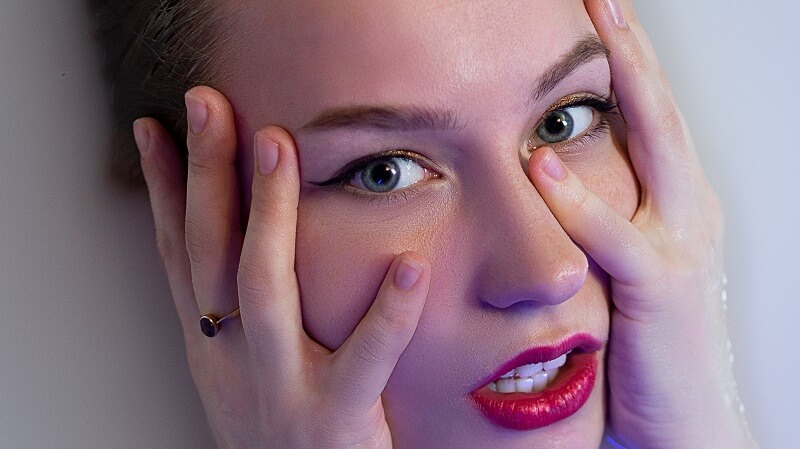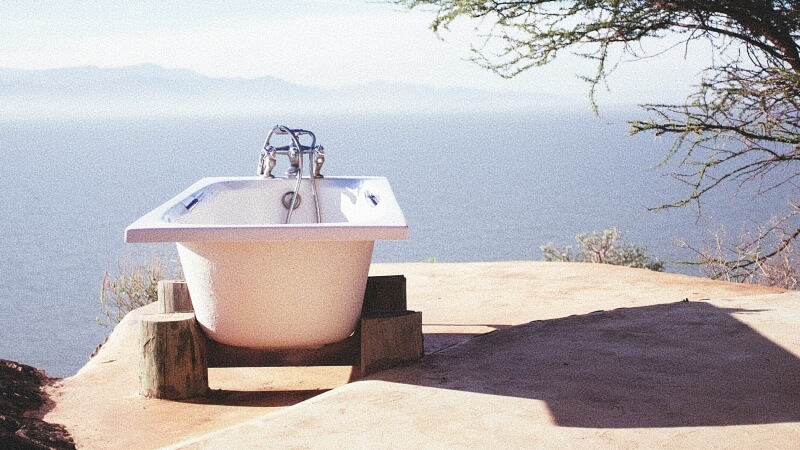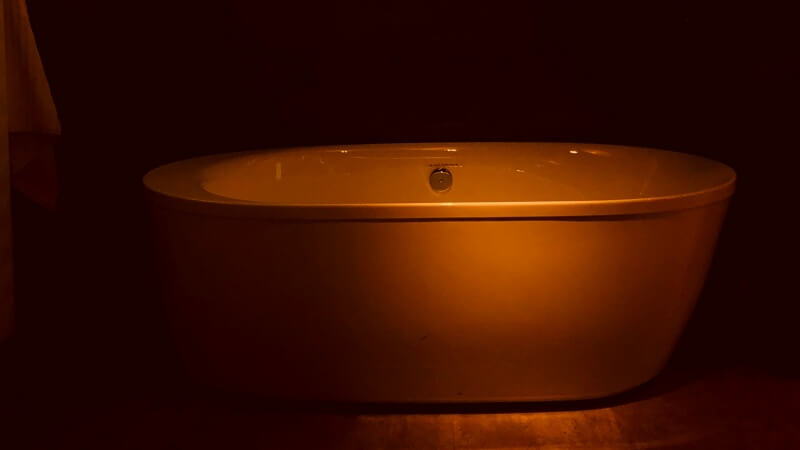
DIY Crafting A Cover For Your Portable Bathtub: A Creative Guide
Do you ever wish your portable bathtub had a bit more pizzazz or perhaps some added privacy? Well, you’re in luck! Crafting a DIY cover

Have you ever considered transforming your regular bath into a luxurious milk bath?
These are not merely relics of royal indulgence but a contemporary spa experience you can recreate in the comfort of your own home.
Let’s dive into how you can make your milk bath an unforgettable pampering session.
Milk baths, with a history dating back to ancient Egypt, epitomize luxury and skincare.
The primary ingredient, milk (choose from full-fat, low-fat, or lactose-free), acts as a natural moisturizer. Enhance your milk bath with additives like honey or oatmeal for additional skin benefits.
Selecting the perfect bathtub is crucial for maximizing the enjoyment of your milk bath experience. Here are some key factors to consider:
Look for tubs with built-in armrests and back supports to ensure maximum comfort during your soak.
Ensure the tub’s dimensions suit your body size for a more enjoyable experience.
For those with limited space or no permanent tub, a portable bathtub is a fantastic solution.
They are easy to set up and store away, allowing you to enjoy a milk bath even in smaller apartments.
These tubs come in various sizes and materials, including inflatable options, offering versatility and convenience.
Here are 7 types of milk bath.
Embrace the age-old tradition of the milk bath, but with a twist of modern simplicity. Just pour pure milk into your warm bathwater and stir.
This method is straightforward yet marvelously effective, offering a rich, creamy soak that pampers all skin types.
The natural fats and proteins in the milk help to moisturize and soften the skin, leaving it feeling silky smooth. It’s the epitome of minimalist luxury, proving that sometimes, less really is more.
Enter the sweet realm of honey and milk. This divine duo does wonders for your skin. The key is in finding the perfect balance – a golden ratio of honey to milk.
Honey, a natural humectant, traps moisture in your skin, while its antibacterial properties gently cleanse. Together, they create a bath that not only moisturizes but also gives your skin a healthy, radiant glow. Imagine soaking in this liquid gold – it’s like a hug for your skin!
For those with a penchant for tender care, the oatmeal and milk bath is a match made in heaven.
Ideal for sensitive or irritated skin, oatmeal acts as a gentle exfoliant, soothing irritation and calming redness.
Combined with milk’s hydrating qualities, this bath is a therapeutic escape, offering a sanctuary of comfort for troubled skin. This concoction is particularly heavenly on a cold day or after a long, stressful week.
Transform your milk bath into a sensory voyage with the addition of essential oils. Lavender or rosemary oils are not just about delightful scents; they’re a ticket to tranquility.
Lavender soothes the mind and eases tension, while rosemary revitalizes and energizes.
This aromatic infusion turns your bath into a spa-like experience, nourishing your skin and calming your spirit. Close your eyes, breathe in, and let the aromatic bliss envelop you.
Imagine floating amidst a sea of flower petals, with the creamy goodness of milk enveloping you. Adding roses or lavender petals to your milk bath isn’t just visually stunning; it’s a feast for the senses.
The petals release their natural oils, offering softening properties and a fragrance that can whisk you away to a serene, blooming garden.
It’s an experience that’s as romantic as it is therapeutic, perfect for a special self-care day or a dreamy date night at home.
Take a dip in nature’s embrace with a herbal milk bath. Mixing herbs like chamomile or mint with milk can transform your bath into a refreshing and rejuvenating retreat.
Chamomile is known for its calming properties, ideal for unwinding before bed, while mint revitalizes and awakens the senses.
This herbal infusion is a balm for the soul, offering a serene escape from the hustle and bustle of everyday life.
Why not become a bath alchemist? Customize your milk bath by experimenting with various ingredients that cater to your mood and skin’s needs.
Whether it’s mixing calming herbs, invigorating oils, or luxurious petals, the possibilities are endless.
Create a signature soak that’s uniquely yours, a personal blend that turns every bath into a bespoke spa experience. Embrace your creativity and let your senses guide you to your perfect milk bath concoction.
After indulging in the creamy luxury of a milk bath, it’s essential to follow up with proper post-bath care to maximize the benefits and ensure your skin remains healthy and radiant.
Incorporating a milk bath into your routine is more than just a nod to ancient luxury; it’s a delightful way to care for your skin and relax your mind.
Whether you opt for a simple, classic milk bath or experiment with various additives like honey, oatmeal, or essential oils, the benefits are plentiful.
Remember to follow up with proper skin care post-bath to lock in the moisture and goodness. So go ahead, draw a bath, and indulge in the creamy, soothing embrace of a milk bath today!
How can I enjoy a milk bath while traveling or without a bathtub?
To enjoy a milk bath on the go or in the absence of a bathtub, consider using a portable bathtub, which can be easily set up in a shower space or any suitable area.
Alternatively, you can use milk bath products, like bath bombs or shower gels infused with milk proteins, to get similar benefits during a regular shower.
Is a milk bath suitable for all skin types?
Yes, a milk bath is generally suitable for all skin types.
However, if you have very sensitive skin or specific skin conditions, it’s advisable to do a patch test first or consult with a dermatologist.
Pay attention to any additives you use, like essential oils or herbs, to ensure they’re also skin-friendly.
How often can I take a milk bath?
You can enjoy a milk bath as often as you like, though once a week is a good frequency to start with.
It allows you to reap the benefits without overdoing it, especially if you’re adding other ingredients like honey or oatmeal, which might be more suited to occasional use.
Can I use any type of milk for my milk bath?
Absolutely! You can choose from full-fat, low-fat, or lactose-free milk based on your preference and skin type.
Full-fat milk is great for more moisturizing benefits, while low-fat or lactose-free options are suitable for those with oily skin or lactose intolerance.
Are there any long-term benefits to regularly taking milk baths?
Regular milk baths can offer long-term benefits, including improved skin hydration, reduced dryness, and a more radiant complexion.
Consistent use can help maintain the skin’s moisture balance and may also aid in soothing minor skin irritations over time. Remember, consistent and proper skin care is key to achieving and maintaining these benefits.


Do you ever wish your portable bathtub had a bit more pizzazz or perhaps some added privacy? Well, you’re in luck! Crafting a DIY cover

Have you ever longed for extra comfort in your portable bathtub? Imagine enhancing your bathing experience with custom-made chairs and loungers tailored just for you.

When it comes to adding a personal touch to your home, your portable bathtub should not be an exception. This post will guide you through

Imagine stepping into your portable bathtub and finding the water temperature just perfect – every single time. This isn’t just a dream; it’s entirely achievable

Do you ever wish your portable bathtub had a bit more pizzazz or perhaps some added privacy? Well, you’re in luck! Crafting a DIY cover

Have you ever longed for extra comfort in your portable bathtub? Imagine enhancing your bathing experience with custom-made chairs and loungers tailored just for you.

When it comes to adding a personal touch to your home, your portable bathtub should not be an exception. This post will guide you through

Imagine stepping into your portable bathtub and finding the water temperature just perfect – every single time. This isn’t just a dream; it’s entirely achievable
Copyright © 2025 batheportablebathtub. All Rights Reserved.
One Response
The detailed insights on selecting the perfect bathtub for a milk bath are incredibly helpful. The focus on materials, size, shape, and comfort ensures a personalized and enjoyable pampering session.